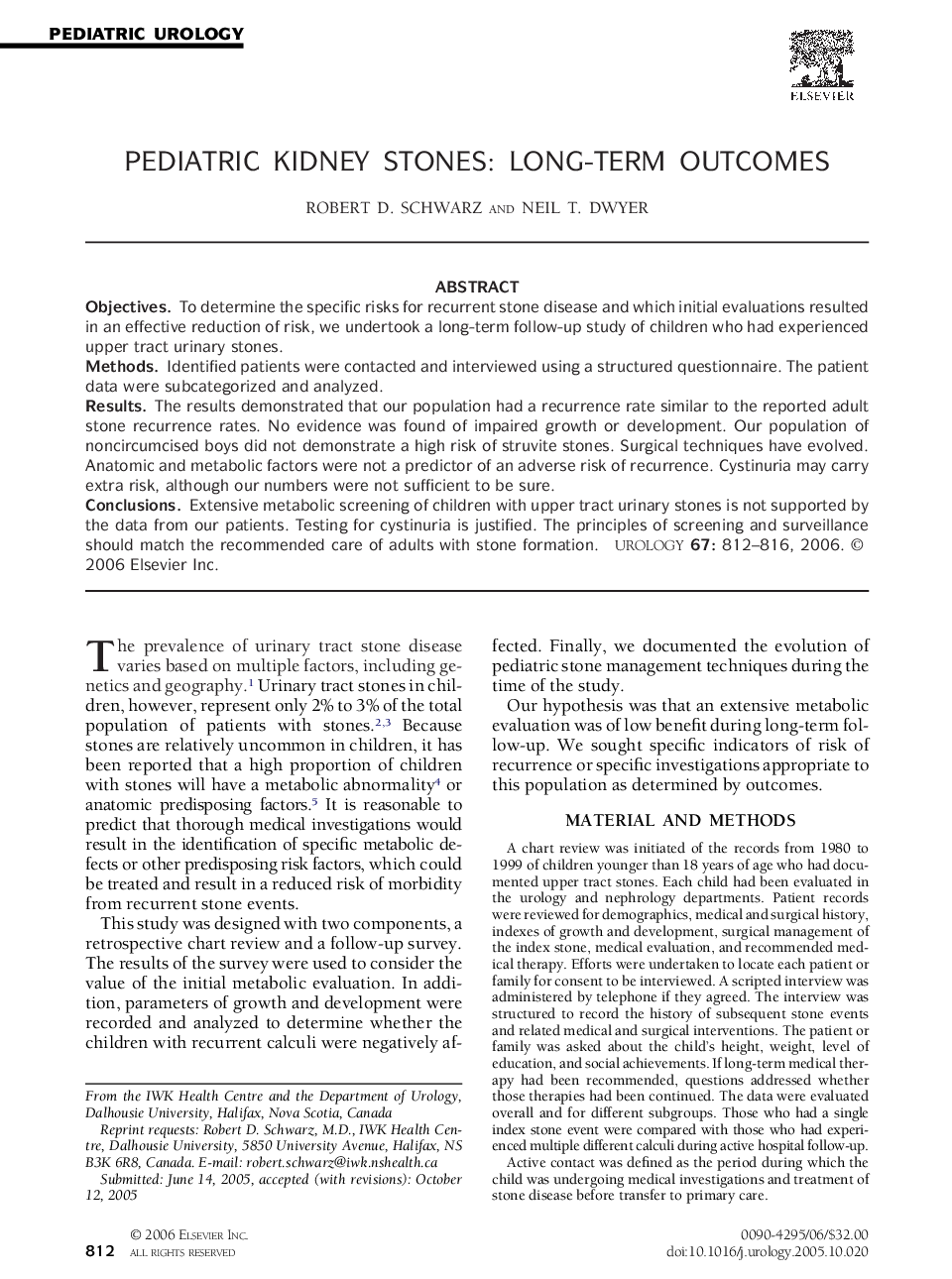| Article ID | Journal | Published Year | Pages | File Type |
|---|---|---|---|---|
| 3906934 | Urology | 2006 | 5 Pages |
ObjectivesTo determine the specific risks for recurrent stone disease and which initial evaluations resulted in an effective reduction of risk, we undertook a long-term follow-up study of children who had experienced upper tract urinary stones.MethodsIdentified patients were contacted and interviewed using a structured questionnaire. The patient data were subcategorized and analyzed.ResultsThe results demonstrated that our population had a recurrence rate similar to the reported adult stone recurrence rates. No evidence was found of impaired growth or development. Our population of noncircumcised boys did not demonstrate a high risk of struvite stones. Surgical techniques have evolved. Anatomic and metabolic factors were not a predictor of an adverse risk of recurrence. Cystinuria may carry extra risk, although our numbers were not sufficient to be sure.ConclusionsExtensive metabolic screening of children with upper tract urinary stones is not supported by the data from our patients. Testing for cystinuria is justified. The principles of screening and surveillance should match the recommended care of adults with stone formation.
